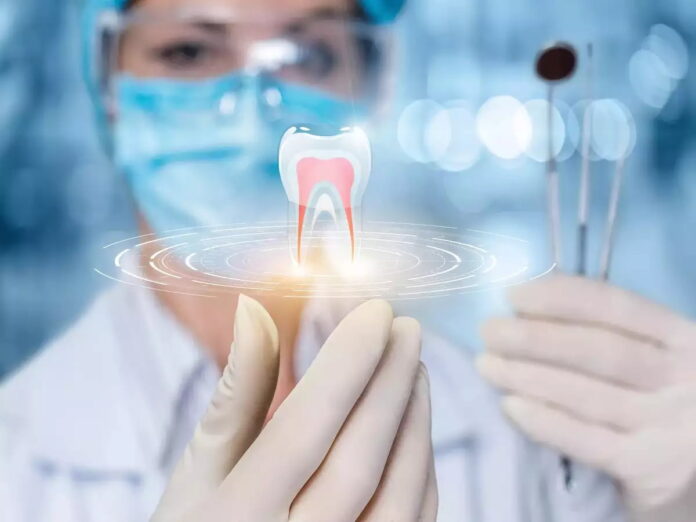The realm of dental care, often perceived as a static and traditional field, is undergoing a seismic shift in the past few years. From technological advancements to improved treatment methodologies, the future of dental care is promising a blend of comfort, precision, and efficiency. Well, let’s journey through some of the groundbreaking innovations that are reshaping the way we perceive and experience dental care.
Teledentistry
Teledentistry is rapidly emerging as a transformative force in the dental landscape. It is the perfect embodiment of the convergence of healthcare and digital technology.
Dental care is embracing this digital shift to offer consultations, diagnoses, and follow-ups without the confines of a traditional clinic. Teledentistry provides an accessible and convenient solution for patients in remote areas or those with mobility challenges, ensuring they don’t compromise on their oral health.
It not only eliminates geographical barriers but also reduces waiting times and expedites treatment processes.
Moreover, in an era characterized by global challenges like the pandemic and disasters, teledentistry stands out as a resilient and safe model, ensuring continuity of care while minimizing physical interactions. As technological infrastructure improves, teledentistry is poised as an integral facet of modern dental care, bridging distances and ensuring access to quality dental consultations.
3D Printing
3D printing, once a niche technology, is now cementing its role as a game-changer in the dental industry. This innovative approach offers unprecedented precision, customization, and efficiency in dental procedures.
3D printing ensures dental solutions that are tailored to individual patient anatomy. For example, White Pine Family Dentistry in Hamilton, is using 3D-printed Invisalign® aligners custom made for patients. with this kind of technology, they can fix conditions that just a few years ago would have required metal braces.
3D technology is also making it easier to produce dental implants, bespoke orthodontic devices, or even full sets of dentures.
The benefits of this technology are manifold. For one, reduced production times mean quicker treatments. Also, the precision of 3D models minimizes errors and the need for frequent adjustments.
Furthermore, as research progresses, the prospect of bioprinting, where dental structures are printed using biocompatible materials or even a patient’s cells looms on the horizon. Bioprinting promises natural, durable, and highly compatible dental solutions.
Artificial Intelligence in Diagnostics
Artificial intelligence (AI) is carving a transformative path in the world of dental care. Diagnostic processes, formerly reliant on the trained eye of a dentist, are now being augmented by AI algorithms.
These systems, nurtured on extensive datasets of dental images and conditions, are displaying a remarkable ability to detect and diagnose oral issues, often with higher precision and consistency than the human eye.
AI ensures a meticulous scrutiny that promises early and timely intervention whether it’s the early identification of cavities, subtle signs of gum diseases, or even potential indicators of oral cancers. Dental clinics can only be perfect with integration of these cutting edge AI-based technologies.
Augmented Reality in Dental Training
The realm of dental education is undergoing a transformative wave with the integration of augmented reality (AR). Budding dentists can now engage with interactive, real-world simulations via AR since they are no longer confined to the traditional methods of textbooks and cadaveric models.
AR provides dental students a deeply immersive and hands-on learning experience by overlaying digital information on physical objects or environments. This technology aids in understanding intricate anatomical structures, simulating surgical procedures, and even practicing diagnostic skills in a risk-free, controlled environment.
Furthermore, AR’s adaptability ensures that training modules can be continuously updated to reflect the latest research and techniques, keeping students at the forefront of dental advancements.
As AR technology becomes more refined and pervasive, it promises to produce a new generation of dentists who are not only theoretically proficient but also exceptionally well-prepared for real-world clinical challenges, marking a monumental shift in dental education and practice.
Laser Dentistry
Gone are the days when dental procedures invoked anxiety and discomfort. The precision of lasers is causing a transformative evolution.
This incredible technology facilitates treatments that minimize pain, reduce the need for sutures, and accelerate recovery times. From accurately targeting and removing tooth decay to reshaping gum tissues, laser dentistry prioritizes patient comfort without compromising on efficacy.
Additionally, the decreased necessity for anesthesia and minimized bleeding during procedures translates to safer, quicker, and more efficient treatments. Patients stand to benefit from a dental care future characterized by speed, comfort, and heightened effectiveness the more dental practitioners adopt and master this technology.
Wrapping up
As technology continues to intertwine with healthcare, it’s clear that our visits to the dentist in the coming years will be markedly different from the past. The future will be characterized by swift treatments, reduced discomfort, and better outcomes, thanks to these innovations that promise not only enhanced precision and efficiency but also a shift towards prevention and holistic oral health.
Read Also
- Comparing 2025 Dental Practice Management Software OptionsSoftware Key Strengths Potential Limitations Best For Dentimax • Offers both cloud-based and on-premise/server deployment. • Tight integration between imaging (e.g. X-ray sensors) and practice management, charts, treatment planning, imaging all in one. • Transparent pricing and relatively simple UI/usability; solid for small to medium general practices. • May lack some of the… Read more: Comparing 2025 Dental Practice Management Software Options
- Top Innovations in Dermatology and Skincare TechnologiesHave you ever wondered how skincare keeps getting better year after year? From fighting acne to reducing wrinkles, today’s treatments seem more advanced than ever before. The tools and techniques used by dermatologists today are smarter, safer, and more effective than those we had just a few years ago. These breakthroughs don’t just help with… Read more: Top Innovations in Dermatology and Skincare Technologies
- Telehealth and Beyond: Building a Connected Continuum of CareHealthcare is on the verge of a radical transformation. Technology no longer simply supports medicine; it actively shapes how care is delivered and experienced. Achieving a seamless continuum demands more than deploying tools—it requires intentional design, coordinated teamwork, and innovative platforms that adapt to diverse clinical and patient needs. This article explores key strategies for… Read more: Telehealth and Beyond: Building a Connected Continuum of Care
- Optimizing CT Protocols: The Hidden Key to Efficiency and Cost Savings in RadiologyIntroduction: Why CT Protocol Optimization Matters Computed Tomography (CT) is a cornerstone of modern diagnostic imaging, providing critical information across nearly every medical specialty. However, maximizing the value of CT — both clinically and financially — requires more than just advanced hardware. The real secret lies in the optimization of CT protocols. When CT protocols… Read more: Optimizing CT Protocols: The Hidden Key to Efficiency and Cost Savings in Radiology
- The Role of Carbide Burs in Modern Dental ProceduresAs a result of this procedures need to be well coordinated and to this end, precision tools are used by dental practitioners. Among the most essential tools in a dentist’s arsenal are carbide burs, which have revolutionized various aspects of dental work. Today’s dentistry cannot work without these tools as they are both strong, sharp,… Read more: The Role of Carbide Burs in Modern Dental Procedures






